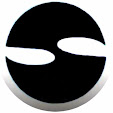A poorer cousin of K-pop, the Korean indie scene is apparently not the place to make money, as the below article reports, arguing that even bands who have had some measure of success can rarely make ends meet. Some cite the amount of “idol” bands filling the charts in as the cause of this, whilst others point to the ‘mercenary’ nature of the Hongdae club scene.
Some netizens are saying the fans themselves are to blame for not spending enough on their favourite artists, others argue its just the bands that need to raise their own profiles, and the rest say it’s the Chaebols that have spoilt the music scene for new bands.
It is worth noting that in Korean that the use of the word “indie” does not refer to a specific genre in the way it might to our English-speaking readers. It is used here to refer to Korean punk acts of renown like Crying Nut and No Brain, as well as more commercial pop-rock artists like CNBLUE.
From Naver:
‘Almost No Bands Make A Living Through Music.’
’1 million won a month is
practically nothing. Music is my dream but as you get older, it gets
harder to stand.’ A (38), runs a bar in at Seogyo-dong, Mapo-gu,
in Seoul. He was, 3 months ago, a guitarist in an active and successful
indie band, that once topped the indie charts, and made their way into
the public eye by writing music for dramas. However, despite being ‘on a
roll’ they never earnt more than a million won a month. ‘In the indie
world establishing yourself financially is not easy even if you have a
following. There are nearly no bands making enough to get by through
music.’ The members of A’s band have moved on to managing cafes, bars
and schools, or just drifting between different jobs. But, this is not
to say he’s given up music, he dreams of rekindling his love for music
once he has raised enough money.
Of the roughly 500 bands native to the Hongdae club scene, there are only around 10, including Crying Nut, No Brain and Nell(Pictured,
L-R), who are able to make a living. Many have pointed out that in
order to help diversify Korean music, indie bands would have to have
been able to perform steadily for 20-30 years.
There are currently around 500 bands native to the Hongdae area, and this estimate is separate from the one given by the Record Label Industry Association of Korea. Of the roughly 100 bands playing this year’s rock festivals, the bands able to make a living amounts to less than 10, and they tend to be well known acts such as Crying Nut, No Brain and Nell
In the year 2000, rookie indie
bands made their way into the public eye, and began to be paid on a
monthly basis. Popularity was rewarded with the assurance of Korean
releases, and pay was around a million won each. These despotic ‘slave
contracts’ are greatly praised amongst business circles.
The number of indie bands playing
at rock festivals who are capable of earning the minimum cost of living
(in 2012 around 55 million won) is estimated to be around 100. This is
because, outside of business events, there is no real profit to be found
from rock festivals. Album sales are only a publicity issue and, the
truth is, the sales market has sort of died, with digital recording
sales returning a mere 5% to each singer.
According to high-ranking fan club
members, we are fast approaching the ‘free stage’. More than ten venues,
such as Club FF, Evans, Hauter, Jammers, Spat, Ta, Drug, GoGoS2, and
others, are holding animated concerts in the Hongdae
area, but the earnings from these events are extremely poor. Most clubs
will only start paying the artists money from the admission fee if the
audience has more than 10 people. The effect of this is a B-list band
getting 12 people to come would then have to split the profit from those
two people 5 ways. So it is common for bands to be playing a venue
that’s getting 2-3 million won without receiving a penny.
Korean indie music agencies have
said ‘Clubs are looking for an audience of 5-30 people on weekdays and
70-100 on the weekend, this is not easy and every club has the same
requirements.’ adding ‘Club management won’t see profit from ticket
sales and whilst they make a little money on selling booze, recently the
sums haven’t added up at closing time.’
In their late 30s the young artists
who determined to ‘make a living with music they like’ will start
working in bars or cafes, teaching at schools, working as private
tutors, or any job which will help them avoid joining the ranks of
office workers.
An indie agency representative has pointed out ‘People may have formed programmes like EBS’s Hello Rookie, KBS Top Band, and KOCCA’s K-rookies,
but there’s no real public interest. In order to help diversify Korean
music, indie bands would have to have been able to perform steadily for
20-30 years.’
Cultural Critic Jeong Teokhyeon has
said ‘The world of indie plays an important role in nourishing Korean
music.’ and ‘This market needs help if it is to develop. Band must be
increasingly and regularly invited on shows such as ‘I’m a singer’(KBS) and ‘Immortal Classic’(MBC)’
Lee Hyun
engine@segye.com


No comments:
Post a Comment